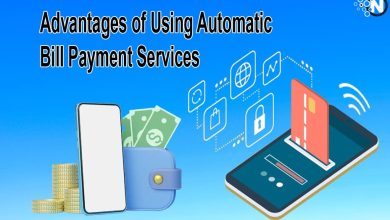Securing IoT Devices – The Role of Proxies in IoT Cybersecurity

The popularization of Internet of Things (IoT) devices has changed our lives, starting an eon of ultimate connectivity and convenience. Yet, this convenience comes with heightened cybersecurity risks.
IoT devices are prime targets for cyberattacks, necessitating robust security measures. Proxies, in turn, play a pivotal role here. It is never too early or too late to explore the critical role of proxies in IoT cybersecurity! So, let’s start right now.
How a Proxy Works?
At its core, a proxy is like a friendly guardian between your IoT device and the vast world of the internet. Imagine you’re sending a letter, but instead of mailing it directly to its destination, you hand it over to your trusty friend, who takes it there for you. Here’s how a proxy works in simple terms:
- Request Relay: When your IoT device wants to communicate with a website, server, or online service, it sends a request. But instead of sending it directly, it sends the request to the proxy first.
- Proxy’s Role: Like your trustworthy friend, the proxy receives the request and decides what to do with it. It can do a few different things:
- Forward the Request: The proxy forwards the request to the internet, acting as a go-between. It then relays the response to your IoT device when it gets it.
- Filter and Control: The proxy can also act as a gatekeeper. It might check the request to ensure it’s safe and allowed, just like your friend would check if your letter is appropriate before delivering it.
- Cache Data: Sometimes, the proxy stores a copy of the data it retrieves. If you request the same thing again, it can provide the stored copy instead of fetching it anew. Think of it like your friend having a copy of your letter ready if someone else wants to read the same thing.
- Response Relay: Once the proxy has done its job, it sends the response (the website or service’s reply) back to your IoT device. Your device thinks it’s communicating directly with the internet, but it’s getting data from the proxy.
To guarantee your proxy works as intended, it is necessary to check it (at least sometimes, but I usually do it once in two to three days). Here is the best FREE tool to check proxy servers — I’ve been using it for over two years, and it never lets me down despite being a free solution.
How SOCKS 5 Proxies Benefit IoT Security?
When it comes to bolstering the security of IoT devices, SOCKS 5 proxies stand out as a valuable tool.
Before I explain, here are the top SOCKS5 premium proxies tested independently. These proxies offer several advantages that make them well-suited for IoT environments:
- Enhanced Privacy: SOCKS 5 proxies provide a high level of privacy by masking the IP addresses of IoT devices. This anonymity makes it challenging for malicious actors to trace or target specific devices, safeguarding their identities and locations.
- Protocol Agnosticism: SOCKS 5 proxies are protocol-agnostic and can handle various traffic types, including TCP and UDP. This flexibility is crucial in IoT ecosystems where diverse communication protocols are used, ensuring seamless connectivity for all devices.
- Authentication and Access Control: SOCKS 5 proxies often have robust authentication mechanisms. This feature allows IoT administrators to control which devices can access the internet and which services they can use, adding an extra layer of security.
- Firewall Bypass: When IoT devices need to access the internet from behind restrictive firewalls or NAT (Network Address Translation), SOCKS 5 proxies can serve as a gateway, enabling devices to establish outbound connections securely.
- Traffic Encryption: Many SOCKS 5 proxies support encryption, which is crucial for protecting sensitive data transmitted by IoT devices. This encryption ensures that even if data is intercepted, it remains unintelligible to unauthorized parties.
- Load Balancing: For IoT deployments involving many devices, SOCKS 5 proxies can distribute traffic load efficiently, preventing congestion and ensuring reliable connectivity.
- Geo-Spoofing: SOCKS 5 proxies allow IoT devices to appear as though they are located in a different geographical region. That can be advantageous for applications that require location-based access or content delivery.
- Resource Optimization: By caching frequently requested data and optimizing network traffic, SOCKS 5 proxies can reduce data consumption and improve the overall performance of IoT devices.
IoT Risks a Proxy Can Minimize:

Proxies are like digital bodyguards for your IoT devices, shielding them from online dangers. Here are some common IoT risks that proxies can effectively minimize, along with real-world use cases to illustrate their importance:
DDoS Attacks (Distributed Denial-of-Service)
Imagine you have a fleet of security cameras in your smart home. Hackers can overwhelm these cameras with massive fake traffic, rendering them useless. A proxy can filter out malicious traffic, allowing legitimate data to reach your cameras and preventing them from becoming part of a botnet used for cyberattacks.
Data Privacy and Leakage
In a smart healthcare setting, wearable tech devices continuously collect sensitive patient data. Proxies can encrypt and anonymize this data before it’s sent to the cloud or healthcare providers, safeguarding patient privacy and preventing unauthorized access to personal health information.
Unauthorized Access
Industrial IoT (IIoT) sensors in a factory environment are crucial for monitoring equipment. A proxy can authenticate and authorize access to these sensors, ensuring only authorized personnel can control or receive data from them, minimizing the risk of sabotage or theft.
Malware and Intrusion
Smart thermostats in homes are often connected to Wi-Fi. If a malicious program tries to infiltrate the thermostat, a proxy can act as a firewall, blocking unauthorized access attempts and preventing malware from compromising the device’s functionality.
Content Filtering
In an educational IoT setting, such as a school with interactive whiteboards, proxies can filter internet content to ensure that students can only access age-appropriate educational materials, reducing the risk of exposure to harmful or distracting content.
Bandwidth Optimization
Proxies can optimize bandwidth usage by caching frequently accessed content in a retail environment with numerous IoT devices like digital signage and point-of-sale systems. That minimizes network congestion and ensures a smoother shopping experience for customers.
Geographical Restrictions
In a smart car rental service, proxies can help enforce geographical restrictions. For example, if a rental car cannot leave a specific city or region, the proxy can restrict access to certain services once the vehicle crosses those boundaries.
Final Words
As the Internet of Things expands, safeguarding interconnected devices becomes increasingly critical. Proxies act as vigilant gatekeepers, shielding IoT devices from cyber threats, ensuring data privacy, and optimizing network performance. Their ability to enhance privacy, control access, and mitigate risks makes them indispensable to any robust IoT security strategy!




